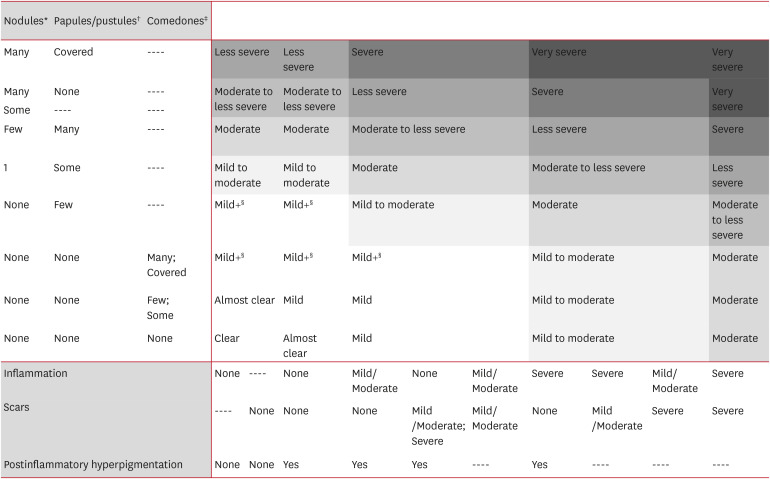Today, I review, link to, and excerpt from The Annals Of Dermatology‘s A Comprehensive Review of the Acne Grading Scale in 2023 [PubMed Abstract] [Full-Text HTML] [Full-Text PDF]. Ann Dermatol. 2024 Apr;36(2):65-73. doi: 10.5021/ad.23.094.
There are 100 similar articles in PubMed.
The above article has been cited by 11 articles in PubMed.
All that follows is from the above resource.
Abstract
Acne is a common skin inflammatory condition that can significantly affect the patient’s quality of life. Therefore, accurate assessment scales are very important for treatment and management of acne vulgaris. This review article issues a comprehensive review of various acne severity assessment scales. In this text, the authors review the acne grading scales, such as the Pillsbury scale, Cook’s acne grading scale, Leeds acne grading system, Global Acne Grading System, and investigator’s global assessment, etc. And we delve into the characteristics, advantages, limitations, and applicability of these scales. The acne grading scale to be developed in the future should be objective, accurate, comprehensive, easy to use, and applicable in a variety of clinics and research settings. Current technologies, such as artificial intelligence, could potentially contribute to the development of ideal acne grading scales that meet unmet needs.
Keywords: Acne; Assessment; Grading; Scale; Severity.
© 2024 The Korean Dermatological Association and The Korean Society for Investigative Dermatology.
Fig. 1. Proposed 9-point multidimensional acne global grading system.
Primary lesions and secondary changes can be encoded into a score by first counting lesions (nodules, papules/pustules, and comedones), choosing the highest corresponding row, and then selecting the degree of secondary changes (and choosing the correct combination). The dashed lines indicate any possible entry (i.e, the final severity is independent of that specific feature/variable).
Scars and inflammation should be categorized as none, mild/moderate, or severe. And post-inflammatory refers to any post-inflammatory color change (eg. focal color changes and/or diffuse erythema not associated with primary acne lesion activity, hyperpigmentation, redness, dryness, or color change due to treatment) and should be marked Yes.
*For nodule, few; 2 to 3, some; 4 to 6, and many; more than 6; †For papules/pustules, few; 1 to 3, some; 4 to 8, and many; more than 8; ‡For comedones, few; 1 to 3, some; 4 to 12, many; more than 12; §Mild +, differentiation of severe comedonal acne.





